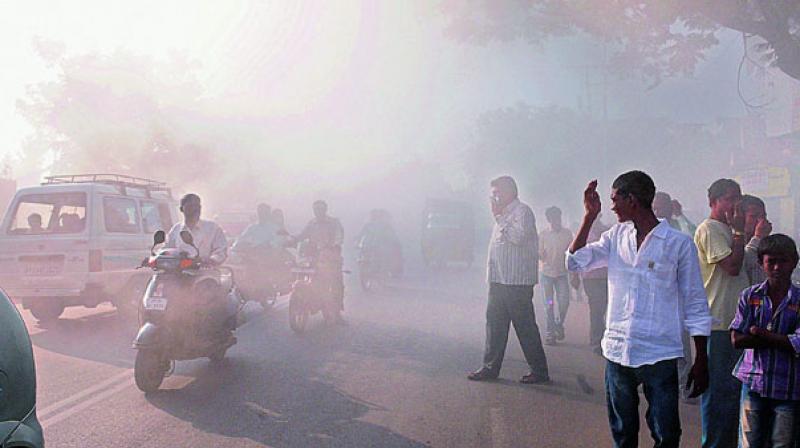CPCB deliberately kept easy targets: Expert
Data from TS is worrying; and each pollution source needs to be plugged.

Hyderabad: Hyderabadis are losing 2.3 years of their lives because the government has set the safe level of pollution at a higher tolerance level than recommended by the World Health Organisation (WHO), gravely endangering the health of the people
This comes as a reality check on the pollution norms set by the in-house pollution monitoring agency, Central Pollution Control Board (CPCB), which allows three times higher levels of pollution than what the WHO considers ideal.
According to the CPCB, air quality is ‘good’ if the particulate matter of size 2.5 (PM2.5) is at 40 units or below for a 24-hour average.
WHO sets a standard at 10 units. Higher than the concentration of particulate matter, the more hazardous the air. PM2.5 comprises smaller particles which enters the lungs.
The report which was prepared by the Energy Policy Institute at the University of Chicago adds that the government policy must stick to WHO standards to save human lives more efficiently.
The report only shows a partial picture as it uses pollution data from 2015.
For Hyderabad, the study pegs PM2.5 pollution at 32 units. Data from the State PCB shows that PM2.5 pollution was measured at 91 units at Sanathnagar and 89 at Charminar in February 2017. In November 2016, the PM2.5 reading was 75 units at Balanagar.
An expert says that the CPCB had deliberately kept easy targets to reduce expenditure on pollution negation. “These numbers are highly political. They are kept at this level to allow industries to be able to continue with their pollution and not have to spend more on cleaner technology,” said professor Babu Rao, retired chief scientist from the Hyderabad-based Indian Institute of Chemical Technology.
Ms Anumita Roychowdhury, executive director of the air pollution and clean transportation programme at the Centre for Science and Environment, Delhi, said Telangana state needed an air quality planning system immediately before things get out of hand.
“In Delhi we have started second generation of pollution management so we have a downward trend. Data from Telangana state sounds worrying which means they need to plug each source of pollution with rapid implementation,” Ms Roychowdhury said.

